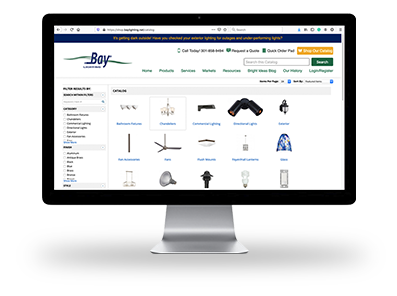LED linear lighting
LED linear lighting is multiple light emitting diodes packaged together to create a strip of light. Linear fixtures have revolutionized commercial lighting by introducing an approachable way to light spaces like warehouses and offices, which was notoriously difficult in the past. They can be installed in ceilings and walls and can be suspended, mounted or recessed.
The following are some of the benefits of LED linear lamps:
- Low maintenance
- Low power consumption
- High brightness
- Design
- Long life
- Indoor/outdoor use
Retrofitting
There are a multitude of benefits to retrofitting your old, inefficient lights. Lighting costs add up, especially when you’re lighting a large commercial space. Non-LED bulbs consume a lot of power and don’t necessarily last very long, which ultimately creates a drain on your bank account. LED lights produce virtually no UV emissions, are made from non-toxic materials, and will reduce your carbon footprint. No matter how old your commercial space is or how long it’s been since you had your lighting plan installed, there’s never a bad time for an upgrade.
Determining your installation plan
When it comes to retrofitting your lighting, there are four different methods that you can choose from depending on your specific needs.
-
Type A – LED Tube with Integrated Driver
– The easiest installation option, retrofitting UL Type A tubes consists of simply swapping the existing LFL with a UL LED tube. No structural modifications or rewiring are necessary. UL Type A tubes are designed with an internal driver and can operate from the existing linear fluorescent ballast. While this is the fastest and simplest retrofitting option, and it can have an impact on energy savings, ballast compatibility should be checked before installation. These lamps are a good option for increased ability to control light via ballast factor. They come in different wattages and beam angles, and lumen output can be controlled by the existing ballast.
-
Type B – Ballast Bypass LED Tube
– Like Type A tubes, Type B tubes use an internal driver. However, the integrated internal driver is powered by the line voltage supplied to the existing fixture. Type B LED tubes are either single-end power or double-end power. Single-ended tubes require the ballast to be removed and the socket wired to line voltage. Double-end tubes are a bit more popular, as there are fewer safety hazards associated with them, such as electrical current traveling across the lamp holder. For this retrofitting option, a professional will need to remove or bypass the existing ballast. Overall, Type B is the simplest system and is more efficient than Type A as it requires no power loss.
-
Type C – LED Tube with Remote Driver
– Unlike Types A and B, Type C tubes have an external driver that powers the LED tube. Drivers are available with three different standard outputs and can be programmed for more or less output depending on lighting level preferences. The retrofitting process is similar to that of Type B tubes in that a professional will need to modify the fixture by removing the ballast. The low-voltage outputs of the driver are connected to the sockets rather than line voltage. Type C drivers can power multiple LED tubes in the fixture. They offer excellent efficiency and performance, as well as dimmability and the longest lifespan.
-
Retrofit Kit
– A retrofit kit can be used to modernize and improve an existing lighting fixture. Generally, they consist of screws, sockets, brackets reflectors, and quarter-turn fasteners. They’re a good option when the lighting system is efficient, but its performance could be better or more up to date. LED technology is revolutionizing lighting for the energy savings, longevity, and sustainability it offers. A retrofit kit is a simple way to save on your electric bill and achieve optimal light levels without having to completely replace your existing fixtures.
Since lighting is very technical, and it’s important for everyone’s safety to get all the details right, it’s best to work with a lighting expert to determine which approach will work best for your commercial space.
Getting started
Now that you’ve decided to retrofit your commercial lighting scheme with linear LEDs, the next thing to do is to connect with an expert. You might be feeling uncertain about which option is right for your space, given the range of options. An LED lighting professional can help you choose the right installation plan, as well as the perfect products to suit your needs and optimize your space to the fullest. Because there’s a lot to consider, like light location, safety hazards, budget, functionality, and aesthetics, it’s always best to work with professionals. Once you’ve worked together and developed your plan, you’ll be ready to start reaping the many benefits afforded by commercial LED lighting.
If you’re interested in retrofitting your commercial lighting, contact us to discuss your ideas today.




